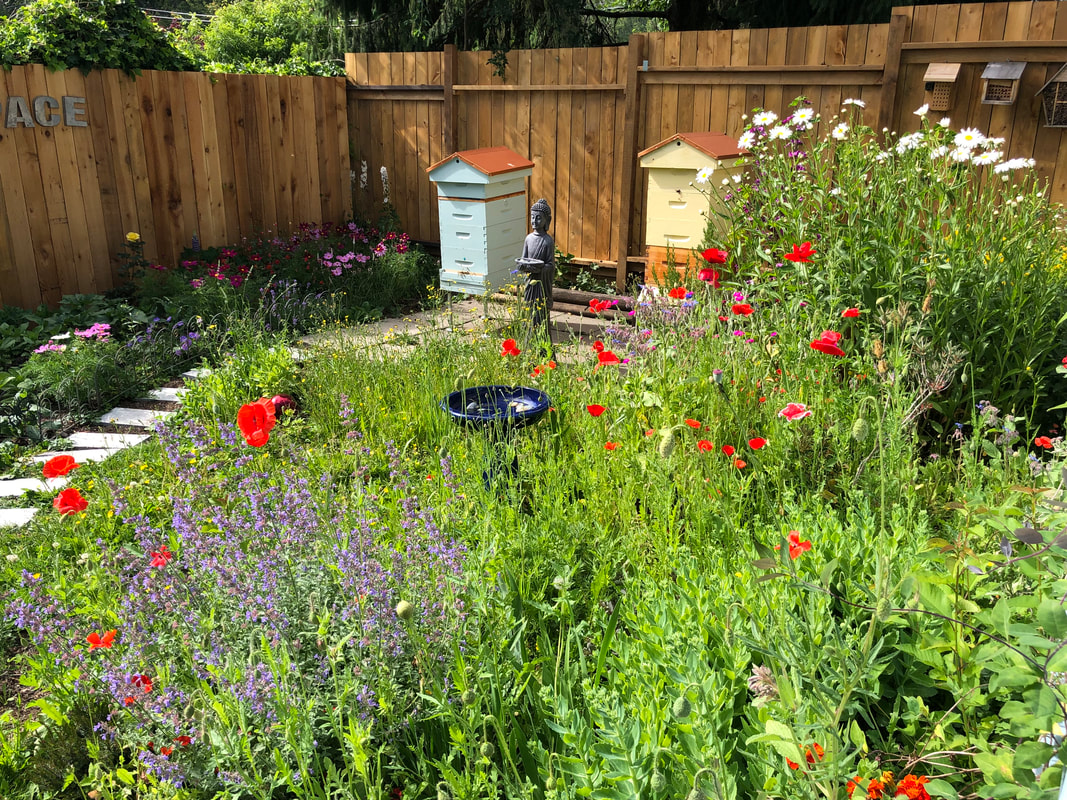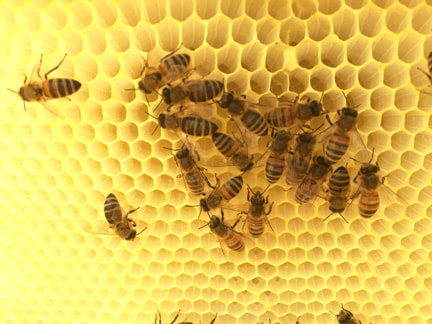Beekeeping

Sometimes one has to wait for dreams to come true and sometimes you really have to work hard for it. I did both.
Living on our acreage in Manitoba afforded me the space and opportunity to acquire some bees and learn to become a beekeeper. Since moving to Vancouver Island I am learning beekeeping in a very different climate.
My motivation to do so was because bees are in trouble. With the onset of Colony Collapse Disorder some years ago, the world's populations of bees and other pollinating insects has declined significantly causing global concern for the future of wildlife as well as crops. The problem is complex. Monoculture farming, pesticides and herbicides being dumped on farmland, decimation of habitat and lack of enough forage has all contributed to this serious decline of bees. Bees no longer have all the tools necessary to combat viruses, parasites and bacterial infections and so, 30% of bee colonies die every year all over the world. It's a terrible statistic. I believe we need to share this planet. It does not simply belong to humans to exploit as they like. And so, in a tiny corner of the earth I offered two beehives for bees to home in. To help the bees we dug and planted new flower beds filled with flowers that would interest and delight bees. We shelter and protect the bees and manage the hives as best we can. We only harvest a bit of the honey and bees wax, - this is an added bonus. The real prize is seeing the bees on a sunny day flying joyfully, or sitting right beside the hive and watching them come and go, listening to their golden hum.
As an artist whose medium is bees wax I wanted to use the materials of my art respectfully. Keeping bees has increased that respect one hundred fold. To see how those tiny insects work is awe-inspiring stuff. To make one pound of bees wax bees will fly 150 000 miles and visit over 33 million flowers. The minute wax scales are exuded from the body of a bee and these are collected and moulded together to make the strong wax comb that will house the eggs and larvae, store nectar and pollen and of course, their honey stores. For me, the bees wax that I use in my art is not just another commodity, but is a precious living thing and I am grateful for the bees that have produced so excellent a material for me to use and create with. Thank you Bees!
Living on our acreage in Manitoba afforded me the space and opportunity to acquire some bees and learn to become a beekeeper. Since moving to Vancouver Island I am learning beekeeping in a very different climate.
My motivation to do so was because bees are in trouble. With the onset of Colony Collapse Disorder some years ago, the world's populations of bees and other pollinating insects has declined significantly causing global concern for the future of wildlife as well as crops. The problem is complex. Monoculture farming, pesticides and herbicides being dumped on farmland, decimation of habitat and lack of enough forage has all contributed to this serious decline of bees. Bees no longer have all the tools necessary to combat viruses, parasites and bacterial infections and so, 30% of bee colonies die every year all over the world. It's a terrible statistic. I believe we need to share this planet. It does not simply belong to humans to exploit as they like. And so, in a tiny corner of the earth I offered two beehives for bees to home in. To help the bees we dug and planted new flower beds filled with flowers that would interest and delight bees. We shelter and protect the bees and manage the hives as best we can. We only harvest a bit of the honey and bees wax, - this is an added bonus. The real prize is seeing the bees on a sunny day flying joyfully, or sitting right beside the hive and watching them come and go, listening to their golden hum.
As an artist whose medium is bees wax I wanted to use the materials of my art respectfully. Keeping bees has increased that respect one hundred fold. To see how those tiny insects work is awe-inspiring stuff. To make one pound of bees wax bees will fly 150 000 miles and visit over 33 million flowers. The minute wax scales are exuded from the body of a bee and these are collected and moulded together to make the strong wax comb that will house the eggs and larvae, store nectar and pollen and of course, their honey stores. For me, the bees wax that I use in my art is not just another commodity, but is a precious living thing and I am grateful for the bees that have produced so excellent a material for me to use and create with. Thank you Bees!



